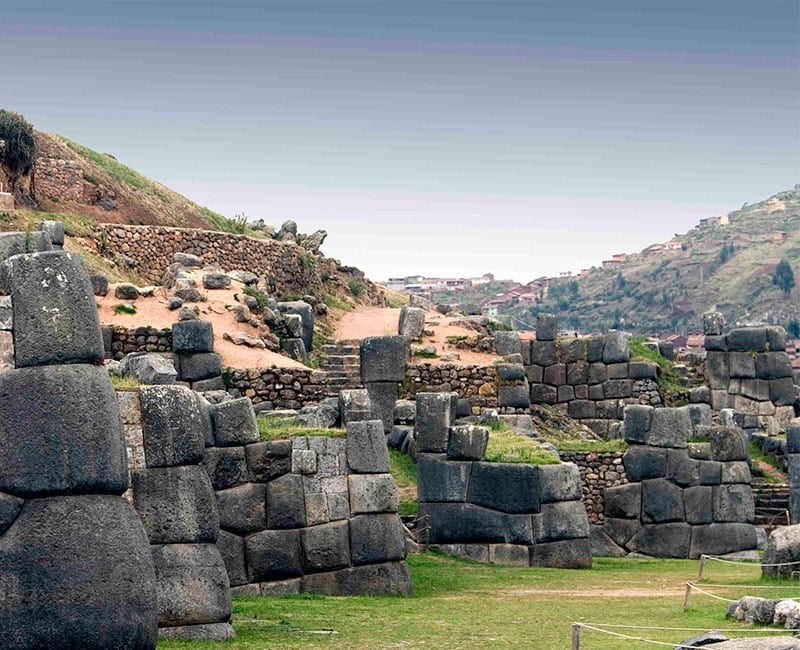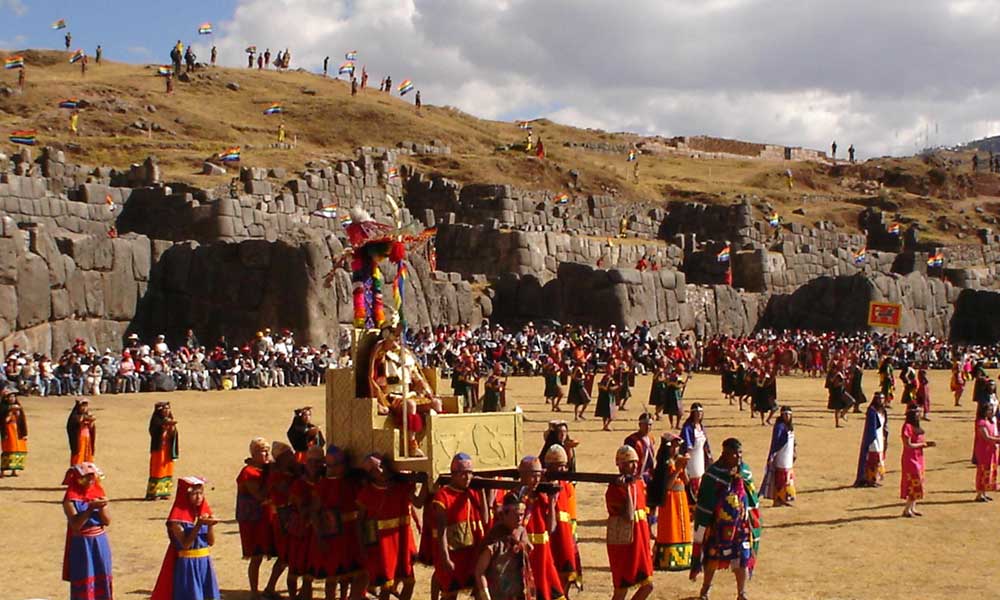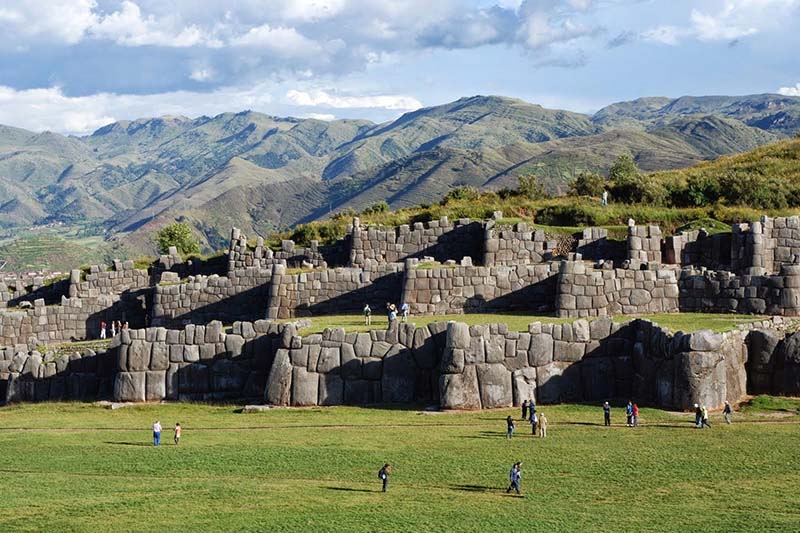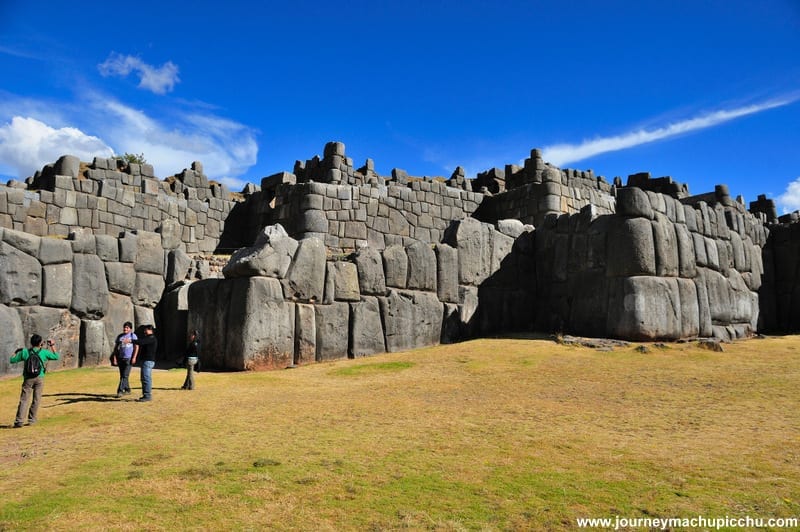Sacsayhuaman Ruins, Peru
James Bustamante is Native to New York but born to Peruvian parents. He has been traveling throughout Latin America since early 2003 and finally made his home in Peru. James has made his way by eating and traveling through almost every country in Central and South America.
Last Updated on December 16, 2021 by James Bustamante
The Sacsayhuaman ruins are a walled complex on the northern outskirts of Cusco, Peru, at an altitude of 3,701 m. Known as the former capital of the Inca Empire, it was added as part of the city of Cusco to the UNESCO World Heritage List in 1983.
We visit these ruins as part of your Machu Picchu Hiking Package as a full-day Cusco city tourist destination. Check out the details of this fantastic place below!

It is located on a steep hill overlooking the city and boasts an incredible view of the valley to the southeast. Research has shown that the earliest communities on the hilltop date back to at least a millennium.
Where Can We Find The Sacsayhuaman Ruins?

Because of its location high in Cusco and its massive terrace walls, Sacsayhuaman is frequently referred to as the fortress.
The large plaza area can hold thousands of people and was designed with the intention of holding ceremonial activities. The best-known zone of Sacsayhuaman includes its great plaza and its adjacent three massive terrace walls.
The stones used in constructing these terraces are among the largest used in any building in pre-Hispanic America. Moreover, they showcase a particular kind of precision that continues to amaze modern-day engineers to this day. The construction of Sacsayhuaman is imposing when you consider the Inca did not use the wheel or metal tools.
The Inca focused on precision when placing the stones. The engineering for this fortress was possible because the stones were placed so closely that not even a single piece of paper could fit between many of them.
When Were the Sacsayhuaman Ruins Discovered?

On March 13th, 2008, archaeologists uncovered other ruins surrounding Sacsayhuaman. Archeologists believe that the “Killke” culture built these significant stone structures.
The use of the Sacsayhuaman ruins continues to remain a mystery. However, some theorize that it was used for religious ceremonies by the Killke culture.
The Killke made this area its home long before the Inca (hundreds of years before), and while Sacsayhuaman seems ceremonial, all of its functions remain unknown.
After the Spanish Conquistadores defeated the Inca Empire, Sacsayhuaman was partially dismantled. The conquistadores believed that if they destroyed ruins like Sacsauhyaman, they would also eliminate the idea of Inca rebellions.
The remainder of the structure was covered in earth, leaving no visible remains of the magnificent construction. That is, until 1934 when a rediscovery happened during excavations.
Nowadays, the site’s primary use is to celebrate the Inti Raymi, an annual Inca festival on the shortest day of the year between sunrise and sunset and the Inca New Year.
It was a meaningful religious ceremony of the Inca Empire held in honor of Inti, the Sun God. Inti is considered one of the most revered deities in the Inca religion.
This sensational festivity is held every year on June 24th near Sacsayhuaman. They also have the “Warachikuy” Festival annually on the third Sunday of September.
It includes rites, warlike dances, battles, and even competitions between community members.
What Are The Main Attractions At The Sacsayhuaman Ruins?

The Main Temple of Sacsayhuaman
The Temple was one the most important places for the Incas as it was the center of celebration ceremonies, rituals, and sacrifices. Thousands of people would gather to see some of the most beautiful and significant rituals of the entire empire.Here, the battle of Sacsayhuaman took place, and many native people died defending the Inca empire and their way of life.
The Towers of Sacsayhuaman
The Towers of Sacsayhuaman, known as Muyuccmarca, Paucarmarca, and Sallaqmarca, are located on the top of the walls.
Thanks to aqueducts, there was plenty of water available on-site. In fact, you can still visit the trenches built by the Inca today during the day tour.
One local story states that the Inca Titu Cusi Huallpa (also known as Cahuide) jumped from the highest part of the Muyucmarca tower to avoid becoming a Spanish prisoner during the Inca resistance of 1536.
The remains of the Paucarmarca tower are located towards the east of the complex. Scholars believe that this tower’s primary purpose was astronomy.
In Quechua, “Sallaq” means rough or rocky, and “Marca” means population. Currently, only the foundations of the Sallaqmarca tower are visible. This is because the building was destroyed in the early days of the Spanish colony.
The Inca’s Throne
The Throne of the Inca (or K’usilluc Jink’ian) meaning “where the monkey climbs’, ‘and it is a succession of seats carved into the rock, boasting a deep aesthetic beauty.
How and why were the Sacsayhuaman Ruins made?

The fortress has three different terraces, which lay one behind the other. The walls reach a height of 59 feet (18 meters) and stretch over 1,772 feet (540 meters). Each wall has up to 40 segments, allowing defenders to catch attackers in a crossfire.
This precision, combined with the rounded corners of the blocks, the variety of their interlocking shapes, and the way the walls lean inward, is thought to have helped the ruins survive devastating earthquakes in Cuzco.
The longest of the three walls is about 1,312 feet (400 meters), and they are about 20 feet (6 meters) tall. Lastly, the estimated stone volume is over 20,000 cubic feet (6,000 cubic meters).
Estimates for the weight of the largest Andesite block vary from 128 tons to almost 200 tons. Because of the various kinds of architecture, all of Sacsayhuaman’s functions are still up for debate by many historians.
Other scholars debate whether Sacsayhuaman may have been a type of sanctuary, as the complex included many temples.
Most notably, the temple is dedicated to the Inca Sun god “Inti.” In addition, there is an interesting area of stepped terracing cut into the side of the Rodadero Hill, which some archaeologists believe in having been a religious shrine, perhaps dedicated to the Pachamama (the mother earth).
How do you reach The Sacsayhuaman Ruins?
The easiest way to reach Sacsayhuaman is to book a tour as everything will be included for you. Our 7-day Package consists of tours around Cusco, day hikes, and Machu Picchu Reservations to ensure your guided walk of the complex. However, if you decide to go alone, you can start at the Plaza de Armas.
First, you will have to find Suecia street, take Huaynapata street, then follow Resbalosa street. Finally, turn right after San Cristobal church and follow the highway.
Finally, you will join the old Inca road to Sacsayhuaman. Keep in mind that the climb is very steep and takes around 30 – 40 minutes, a similar amount of time as a hike to Machu Picchu from Aguas Calientes.
Don’t forget to bring a water bottle and make sure you’re no longer feeling the effects of altitude sickness. Once at the top, you’ll see the ancient ruins of Sacsayhuaman.
Traveler’s Tip: If you don’t mind spending a bit more you can ask any taxi to drive you there, it should only take about 10 to 15 minutes.
For more information on Sacsayhuaman or anything else related to Cusco and Machu Picchu Travel, contact one of our travel specialists at Journey Machu Picchu.
Frequently Asked Questions About The Sacsayhuaman Ruins In Peru.
You can get to Sacsayhuaman as part of a group tour of Cusco or if you only want to go there you can take a taxi from the Cusco City Center, it will only take about 10 to 15 minutes.
You can take a tour of the area and see its main attractions such as the Central Temple and the ancient walls made with stones, some of them weighing over 50 tons.
It was built as a sort of ancient military base that housed hundreds of soldiers and weaponry from that time.
Yes, many of our packages include guided tours of Cusco and Machu Picchu.
Tours can take anywhere from 30 minutes to a couple of hours, it depends on why you are going to the area as well as how many people make up your tour group.


